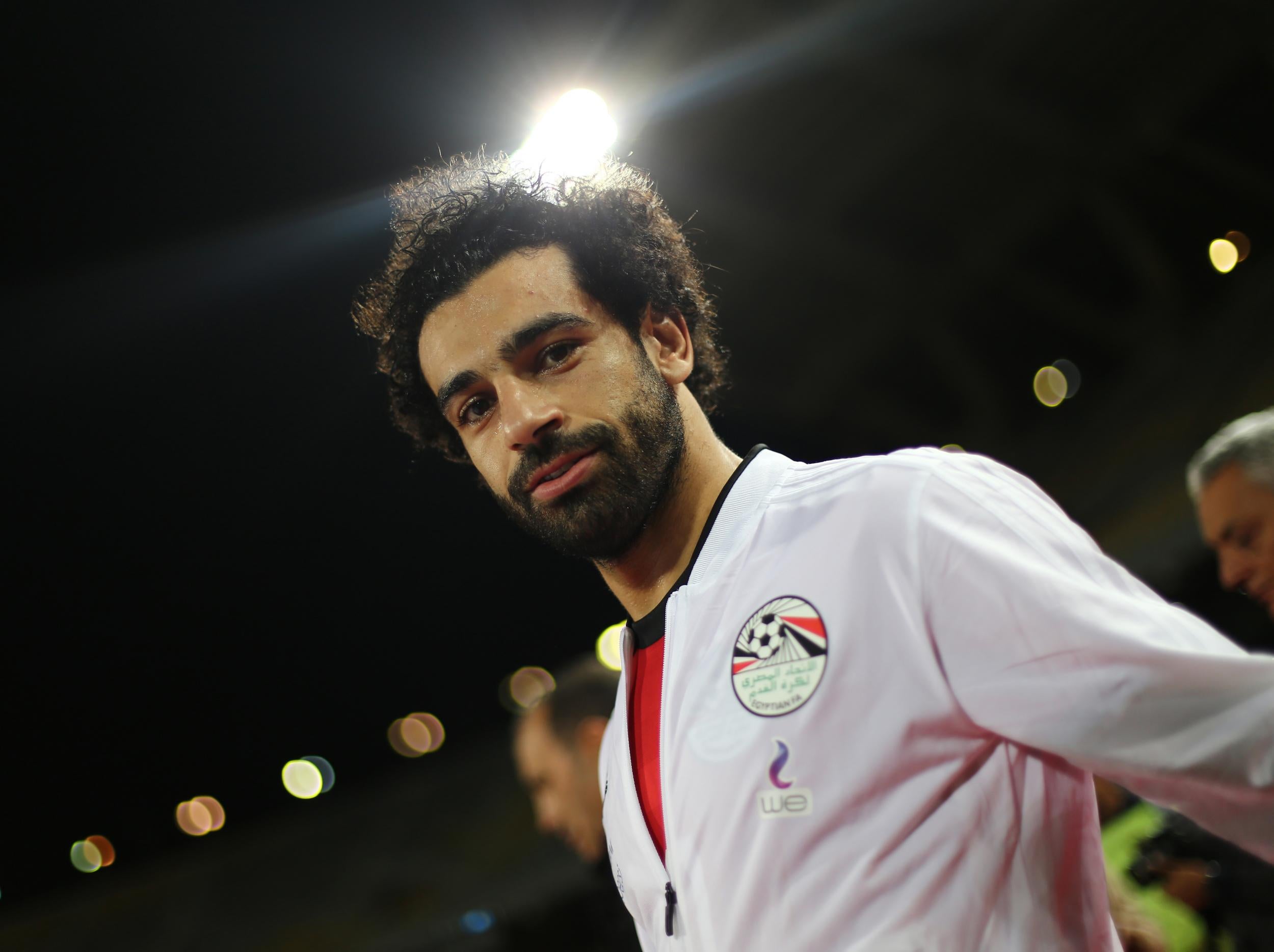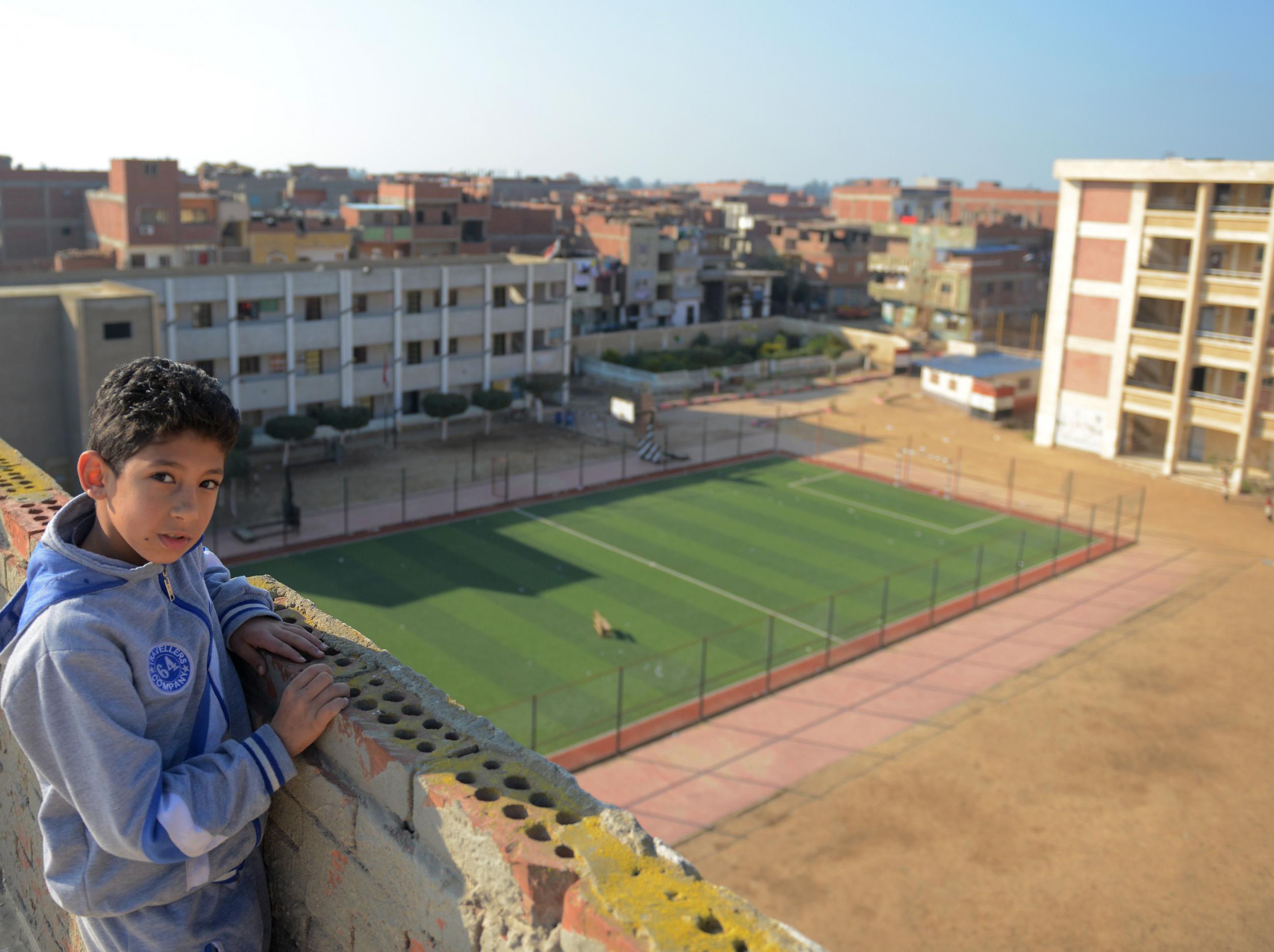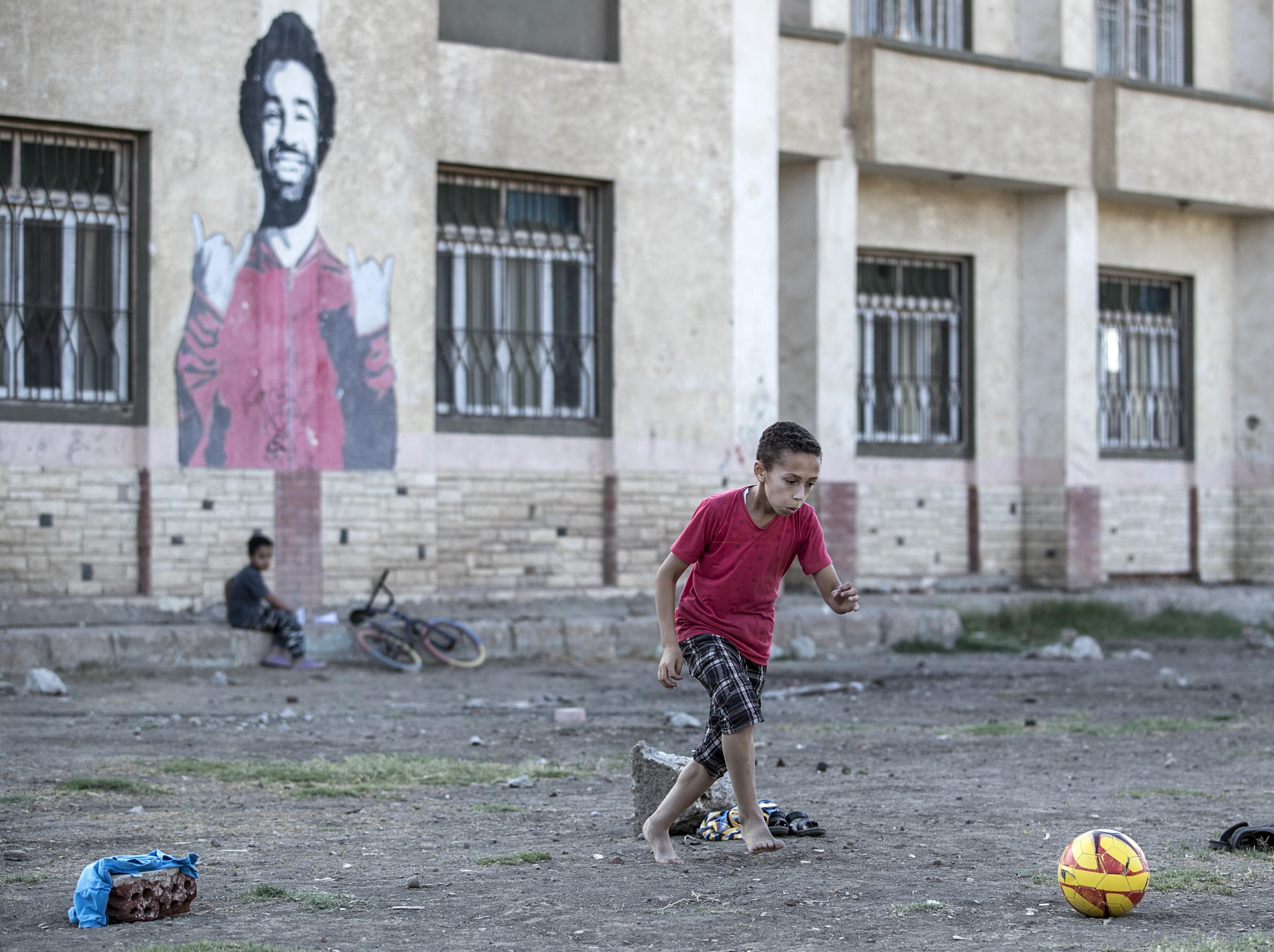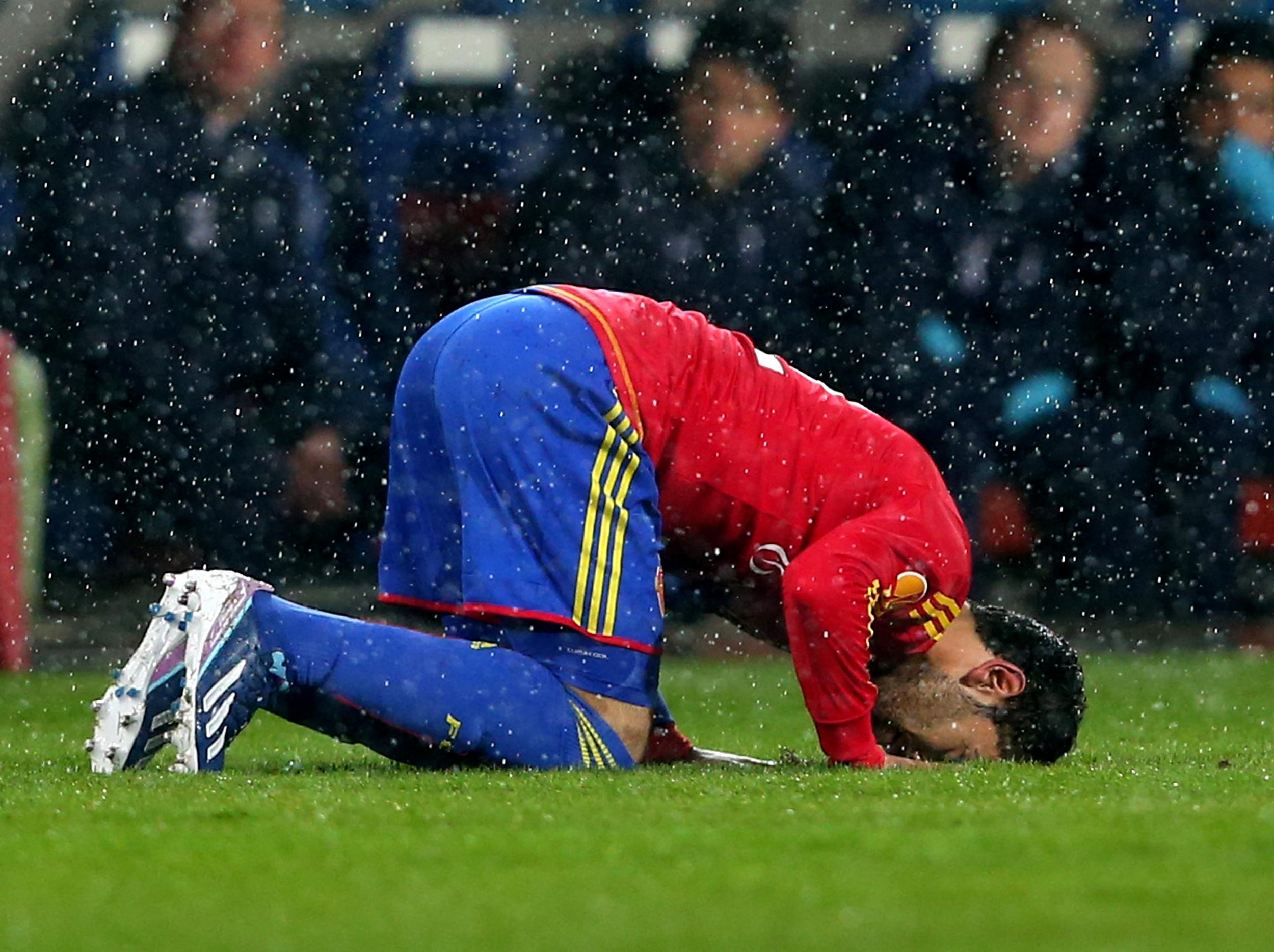“Many coaches will say that they made him famous but I know it was down to me,” insists Said El Shishiny. The man who first met Mohamed Salah when he was a slight teenager playing for El Mokawloon’s Under-16 side as a defender is not alone.
Everywhere you go in Egypt these days there is someone claiming to have played some part in his meteoric rise, especially in Salah’s home town. Situated in the agricultural hub of the Gharbia Governorate, slap bang in the middle of the Nile Delta, Nagrig has become the setting for endless articles and news reports documenting the childhood of the local boy who became a superstar.
Salah’s arduous nine-hour bus journey every day to training in Cairo and back again has become the stuff of legend since his breakthrough season at Anfield. Given the endless number of journalists who have visited Nagrig in recent years to document the childhood of the local boy who became a superstar, at first my arrival after a bumpy three-hour journey in a hire car barely raised an eyebrow in the small town with a population of around 12,000.
But it didn’t take long before I was being taken on a guided tour by an enthusiastic 11-year-old called Mustapha, making my way from Salah’s family home to the pitch where he honed his skills in his youth accompanied by an excited group of around 20 children. Many were wearing Liverpool shirts – none, you suspect, purchased from the club’s official online shop – with the name and number of their hero on the back.
“Of course I saw him play here. He was my neighbour so I know him well,” says Mrs Amene, who now works in the youth centre which was renamed in Salah’s honour a few years ago. “He was always a very respectable child. We are very proud of him.”

Situated next to the dusty pitch overlooked by the town’s mosque and surrounded by paddy fields, the two rooms inside the centre sometimes also host other activities like karate but usually most of the attention is on what is happening outside. Overlooked by a giant mural of Salah on the wall, an impromptu match breaks out that basically involves each player trying to keep the ball for as long as possible before they lose possession and join the chasing pack.
Mrs Amene watches over them earnestly as she speaks to me, making sure nobody is acting out of turn as one of the children – much to their delight – deftly nutmegs my friend. Salah started playing here at the age of eight and immediately caught the eye of coach Ghamri Abdel-Hameed El-Saadani.
“His talent clearly showed from the beginning,” he recalled in an interview in 2018. “But talent is not everything – Mohamed’s success is also a product of a will of steel, effort and determination.” Having made my way on to the roof, I am looking out over the jasmine fields that surround Nagrig as dusk starts to fall when a shout comes from the pitch below: “Mohamed Salah!” It is one of the children trying to attract my attention.
“Mohamed Salah!” I shout back. “Mohamed Salah! Mohamed Salah!” several of them reply in unison. It became a customary greeting during my stay in Egypt, with even stony-faced customs officials and police officers softening when his name is mentioned.
This is a player who has transcended his sport like no other in football-crazy Egypt’s history. The next stop on the tour takes us to Nagrig’s new medical centre, where Liverpool’s star striker has paid for two kidney dialysis machines and various other equipment. Then there is the school down the road which also bears his name which has received extra funding ever since his move to Europe, extended in 2018 to create the Azhari Institute for Girls so they no longer have to take the long journey to the next town for their education.
The Mohamed Salah Charity Foundation has also donated land and the best part of £400,000 to build a sewage treatment works on the outskirts of the town, guaranteeing Nagrig has an abundant supply of water all year round. “Family is everything to him,” says Egyptian journalist Mostafa Algrtly. “If a friend needs help he will always try to do it. He feels a duty to his country to try and give something back. That’s why he is even happy to walk about without any bodyguards sometimes.”
Maher Shetia, the mayor of Nagrig, has a Mohamed Salah chant as his ringtone and these days doubles as an official spokesman for the family given his father’s request to stay out of the limelight. Salah Ghaly was a respected member of the community for many years before his son’s rise to fame and, along with his wife, worked in an administrative role for the government as well as – like many of Nagrig’s residents – trading in jasmine.
“Mohamed was a very ordinary child – like all the other children in this village,” the mayor says. “He inherited his love for playing football from his father and uncles, who played with the village’s Amateur Youth Centre’s team during the 1980s and 1990s.

Salah’s father noticed his son’s talent and had him join the Ittihad Basyoun team when he was 12 years old. One day, Reda El-Mallah, a football scout, came to our village to watch another child named Sherif and possibly persuade him to join one of El-Mokawloon’s small teams in Tanta. He asked the children to play against Sherif so he could assess him. But watching the match there was one player who stood out – Mohamed Salah.”
It wasn’t long until his talent caught the eye of El-Mokawloon’s coaches and he was invited to join their Under-15 side based in Cairo. In stark contrast to his future teammate Sadio Mané’s family at the same age, his father actively encouraged him to pursue his dream despite the huge distances involved.
“I would complain that I didn’t want to travel four hours to training,” said Salah in 2018. “But he stood by me and told me that all great players go through this. The price for him was very high, and I’ll never forget the role he played in my career.”
Yet while his father’s support enabled him to attend training in the short term, there is no doubting El Shishiny’s crucial role in his early development. With Salah by then in his second year at the club, he had arranged for the young prospect to stay with his family in Cairo for one or two nights a week to allow him to rest properly from their training sessions rather than make the long trip back to Nagrig every day.

But even that was not getting the best out of him. Concerned that Salah could fail to reach his potential, his coach came up with a plan. “He was travelling a long way every day so I asked the president if we could help by giving them a room in the club’s lodgings,” he recalls. “I told him that we needed to look after one of our best young players.”
El Mokawloon is also known as Arab Contractors due to its ownership by the construction company, which is one of the region’s biggest road builders. The legend goes that the club president called Ibrahim Mahlab, the CEO of Arab Contractors – who would go on to serve as Egypt’s prime minister for 18 months – to ask his permission and the decision was swiftly made.
El Shishiny also has another claim to fame, although this one has been disputed by various others over the years. “I’m the coach who recommended him for the first team,” he says convincingly. “Mohamed was playing as a left-sided defender for our team but I thought he could be better further forward. At the time, he wasn’t the main player in his position as we had another four who could also play there so I decided to try something different and put him on the right wing.
He was always very quick and was getting into good positions, even if he was missing some of the chances. “We had a match against ENNPI when we won 4-0 and Mohamed had three chances to score but missed every time,” continues El Shishiny. “After the match I went to the changing room and he was crying, so I asked him, ‘Why are you crying?’ He said, ‘Because I didn’t score today.’ . . . Everyone else in the team was happy because we had won but he was so upset. I told him, ‘Don’t worry, you will be the top scorer in our team next season.’ He ended up scoring 30 goals!”

Salah’s impressive performances in his new attacking role at youth level saw him promoted to the first-team squad after much persuasion from El Shishiny. A year later in May 2010, a 17-year-old Salah made his debut for El Mokawloon in the Egyptian Premier League against El Mansoura in a 1-1 draw, scoring his first goal seven months later against giants Al Ahly.
It was the first step of the process that would eventually lead to Anfield via Switzerland and Italy, although Salah had to deal with a major setback early on when he was publicly rejected by the president of Al Ahly’s big rivals Zamalek. “He has always been very brave,” says Fady Ashraf, who is a reporter for Egyptian website FilGoal.
“That sort of thing has happened to many players in Egypt because it is the ultimate goal to play for one of the big two clubs. But he picked himself up and rose up. That’s what he does – every time you think he is struggling he comes through. He has always had this fighting mentality.”
The above is an extract from Made in Africa: The History of African Players in English football, written by Ed Aarons.







